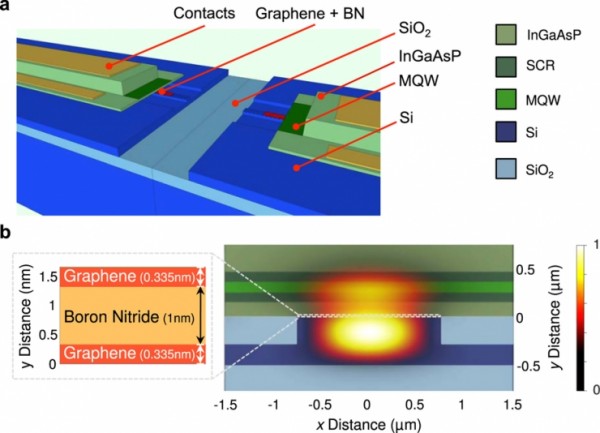Since the neuromorphic chip can process sensor data (such as images, video, sound, etc.) faster and better than the von Neumann structured chip, the research on these chips formed by transistor networks has become a new hot topic. For many years, scientists have been trying to further explore the circuit architecture of neuromorphology. The difficulty lies in how to deal with the overlap between neurons and silicon - synapses and logic gates. From an optoelectronics point of view, it is the span of a photon as it passes through the laser transistor and the synaptic neurotransmitter.
Today, Princeton University researchers have demonstrated a graphene-based optical capacitor. This optical capacitor ensures stable operation of the laser transistor in the optical neuromorphic circuit.
But at the moment, there are still some key differences that prevent people from successfully creating a processor that works like a brain.
For example, we know that the neurons in the chip communicate information through potential shifts or spikes, and the spikes are non-zero or binary, so people must encode information in the time domain. However, the firing frequency of a neuron is not only limited by the central clock cycle, but also the neuron's discharge frequency encodes the strength of the signal only when it is transmitted.
But because neurons are analog systems, the chips that are theoretically made from them can achieve very fast calculation speeds. The clock frequency of the von Neumann structured chip has a limit value, so sooner or later one day will be eliminated. Scientists must find other ways to make the calculation speed even higher.
A recent study showed that the integration of graphene into lasers is a viable solution. This will enable graphene to "capture" photons and turn it into an optical capacitor. When the optical capacitor is incremented in this way, the laser can "swell" at a picosecond speed.
IEEE pointed out: "Factories have proved that graphene is a very ideal saturable absorber because it can absorb and release photons at a very fast speed, and it can work at any wavelength, so no matter what color laser is emitted, It can be absorbed perfectly and it will not interfere with each other."
In other words, this "graphene sponge" can absorb photoelectrons better in the laser, and it can also be used to simultaneously output multiple photons of different wavelengths without any interference.

At the end of Moore's Law, the design concepts of simulated neurons and neural circuits can bring more superior power consumption and scalability to the processor. In optoelectronics, fiber optics and laser transistors are ideal ways to achieve this because photons move faster than electrons.
The latest natural science report shows that graphene capacitors can perfectly combine the neuromorphic chip architecture with optoelectronics.
But don't be too happy. We may also face the next serious problem in the future: Can a laser diode that simulates a neuromorphic circuit array be fast enough to process data from a sensor?
C4B-16V Engine 8 Series: Power Range18KWm-2000KWm
Engine,18KWm-2000KWm
CCSN POWER GENERATION INC.(Engine is a subsidiary of CCSN) , https://www.ccsnengine.com